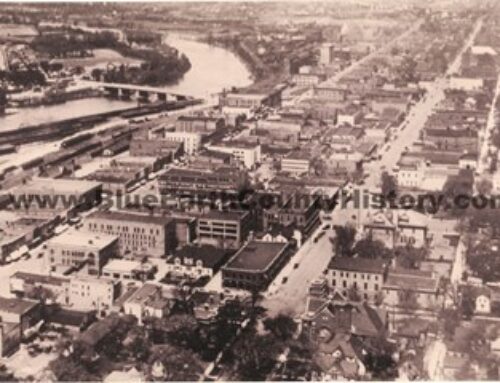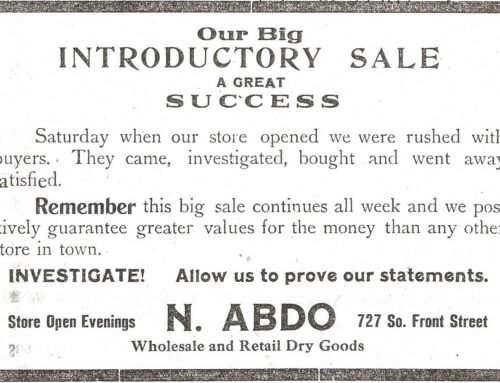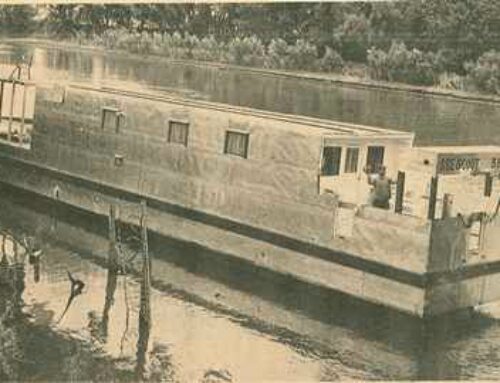One of the challenges with the history of the Prohibition Era is that some of the best stories were never recorded, or at the very least, can’t be proven. The very nature of moonshiners, bootleggers and gangsters was to avoid getting caught; leaving stories untold. Here are just a few stories ripped from the headlines.
Carp on Drunk Gave Clew to the Stills”
Authorities can thank a carp and an observant farmer for alerting them to two large stills south of Mankato, near Woods Ford on the Blue Earth River. In the spring of 1921, a local sportsman killed a large carp that had attacked him. Thinking the fish’s odd behavior needed a closer look, the carp was presented to Hiram S. Goff, judge of the Mankato municipal court. Upon examination, it was decided the fish was inebriated. It had bloodshot eyes and a stomach full of what appeared to be mash, used for distilling alcohol.
Hoping the fish would lead them to an illegal still, Judge Goff, a secret service man out of St. Paul along with some Mankato officials made a search of the hills around Woods Ford. They searched the hills for miles, but couldn’t find the suspected moonshine operation.
A few months later, a farmer from the same area discovered he was missing around 100 bushels of corn. Noticing a few kernels leading from his corn crib towards the river, he followed the trail and soon came upon a moonshine still. There were oil stoves, copper boilers, crocks and strainers, empty sugar sacks and corn mash in kegs and barrels, not to mention a half-empty sack of the stolen corn.
Word of the still was sent to the authorities. Because of the operation’s location and closeness to the Blue Earth River, they realized it was probably the same setup the carp had alerted them to months before. A large group set off to deal with the still. County Sheriff Anton Osten was joined by the police chief, deputy sheriff, county attorney, district court judge, court reporter, Free Press reporter and Judge Goff.
The still was located and seized. Then there was the question of what to do with what remained of the mash and utensils. It was decided the mash should be dumped on the ground and the vessels destroyed. The Free Press reporter shared the proceedings “The sheriff handed the rock to Judge Goff, the Hercules of the party, and told him to put his own court order into execution…Judge Goff brought the stone down on each barrel with a mighty bang.”
In the elaborate words of 1920s reporting, the events were summed up in the August 1, 1921 article in The Free Press:
Had the carp up at Woods Ford on the Blue Earth River not acted as foolishly as their human superiors do when they get too much booze abroad, perhaps the 150 gallons of mash captured at the ford would today be brewing and the mists rising from the same be rapidly turning into “mountain dew” in one of the most secluded spots in Blue Earth County instead of moistening the parched earth.
“Agents Swoop Down on Mankato: Four Soft Drink Parlors Are Raided Simultaneously”
For the dozens of saloon operators in Blue Earth County, the start of Prohibition meant the end of life as they knew it. Some of these men took jobs with the railroad or as mechanics, others tried their hand as grocers or in cigar stores. Some local saloon owners took, perhaps, a shorter route to soda fountains.
Unfortunately, some of these new beverage business ventures were short-lived, making only a brief appearance in later business listings. Others made a success with the new guidelines Prohibition brought to their door, however distasteful they might have found them. One model citizen was George Grabowenski. Prior to Prohibition, he operated a saloon at 229 North Front Street. When Prohibition arrived, his business changed to serving soft drinks, and, from all appearances, he followed the letter of the law. Once Prohibition ended, Grabowenski returned to selling alcohol.
Other saloon-turned-soda-parlor proprietors, however, weren’t quite so law-abiding. Long-time bartender, Ernest Wester, of Good Thunder, was arrested for a second time within a few months in January 1923. Thirteen gallons of alcohol were found in his soft drink parlor. The arresting officers “were of the opinion that nothing ‘soft’ was sold in the place.” Wester pled guilty and was sentenced to 90 days in jail plus a $300 fine.
Similar stories and verdicts can be found scattered throughout the local newspapers, but on March 12, 1930, a much bigger booze story was making headlines. After a month of planning and gathering evidence, twenty-four federal Prohibition agents, with the help of Mankato officials, launched simultaneous raids on multiple locations in Blue Earth County, including four Mankato soda parlors.
Frank J. Mettler’s soda parlor, along with the Club, Jumbo and Oleander “parlors” were all found to have alcohol on the premises. The newspaper reports didn’t indicate if the establishments were caught serving the illegal beverages, but it didn’t matter. According to the 1922 ordinance, any establishment found with alcohol was seen guilty of serving it.
By the end of the day, twenty-two arrests were made between the soda parlors, a private residence, garages and a restaurant, ranging from North Mankato to Amboy. The county jail was filled to capacity with every cell and cot in use. Five more arrests were made the following day in Mankato, Lake Crystal and Good Thunder.
The Prohibition Era has captured the attention of many with its tales of bootleggers, gangsters and speakeasies. Just imagine how many stories have gone untold!







Leave A Comment